Yuxin Hu
VLM-AD: End-to-End Autonomous Driving through Vision-Language Model Supervision
Dec 19, 2024



Abstract:Human drivers rely on commonsense reasoning to navigate diverse and dynamic real-world scenarios. Existing end-to-end (E2E) autonomous driving (AD) models are typically optimized to mimic driving patterns observed in data, without capturing the underlying reasoning processes. This limitation constrains their ability to handle challenging driving scenarios. To close this gap, we propose VLM-AD, a method that leverages vision-language models (VLMs) as teachers to enhance training by providing additional supervision that incorporates unstructured reasoning information and structured action labels. Such supervision enhances the model's ability to learn richer feature representations that capture the rationale behind driving patterns. Importantly, our method does not require a VLM during inference, making it practical for real-time deployment. When integrated with state-of-the-art methods, VLM-AD achieves significant improvements in planning accuracy and reduced collision rates on the nuScenes dataset.
Uncertainty-Guided Enhancement on Driving Perception System via Foundation Models
Oct 02, 2024



Abstract:Multimodal foundation models offer promising advancements for enhancing driving perception systems, but their high computational and financial costs pose challenges. We develop a method that leverages foundation models to refine predictions from existing driving perception models -- such as enhancing object classification accuracy -- while minimizing the frequency of using these resource-intensive models. The method quantitatively characterizes uncertainties in the perception model's predictions and engages the foundation model only when these uncertainties exceed a pre-specified threshold. Specifically, it characterizes uncertainty by calibrating the perception model's confidence scores into theoretical lower bounds on the probability of correct predictions using conformal prediction. Then, it sends images to the foundation model and queries for refining the predictions only if the theoretical bound of the perception model's outcome is below the threshold. Additionally, we propose a temporal inference mechanism that enhances prediction accuracy by integrating historical predictions, leading to tighter theoretical bounds. The method demonstrates a 10 to 15 percent improvement in prediction accuracy and reduces the number of queries to the foundation model by 50 percent, based on quantitative evaluations from driving datasets.
Artificial Intelligence for Neuro MRI Acquisition: A Review
Jun 10, 2024Abstract:Magnetic resonance imaging (MRI) has significantly benefited from the resurgence of artificial intelligence (AI). By leveraging AI's capabilities in large-scale optimization and pattern recognition, innovative methods are transforming the MRI acquisition workflow, including planning, sequence design, and correction of acquisition artifacts. These emerging algorithms demonstrate substantial potential in enhancing the efficiency and throughput of acquisition steps. This review discusses several pivotal AI-based methods in neuro MRI acquisition, focusing on their technological advances, impact on clinical practice, and potential risks.
SRDTI: Deep learning-based super-resolution for diffusion tensor MRI
Feb 17, 2021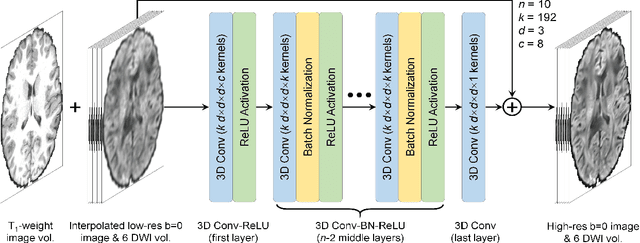
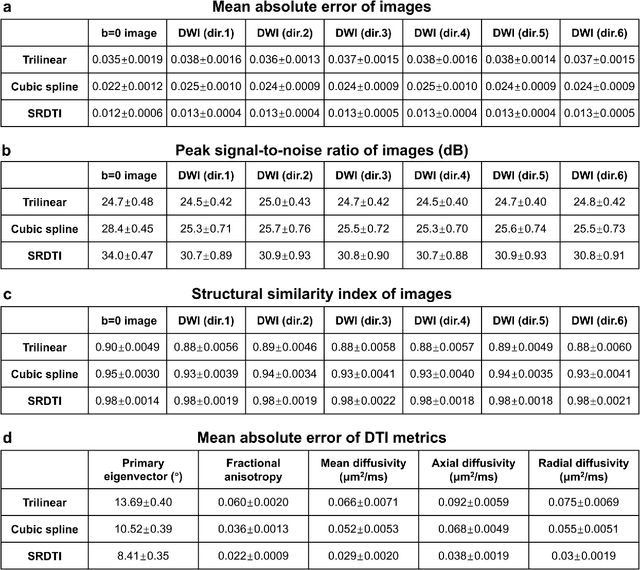
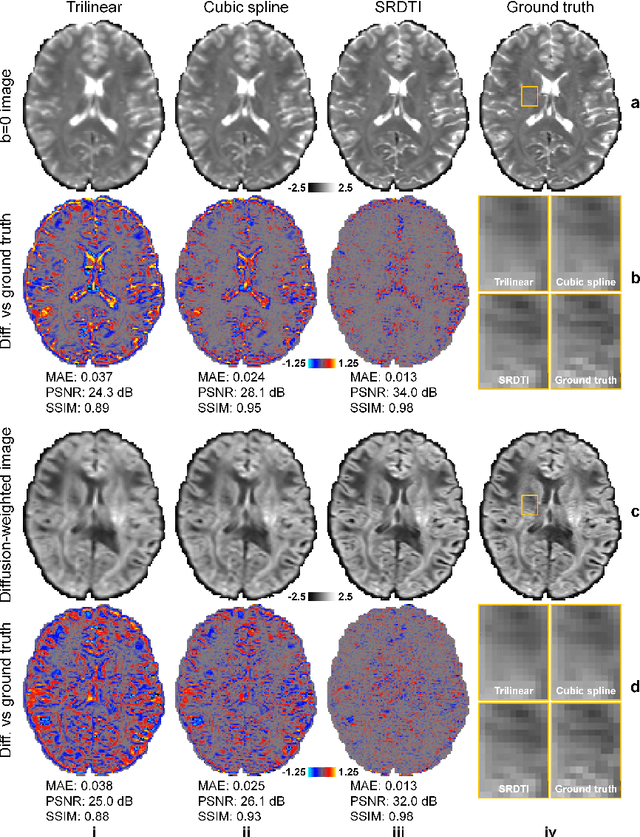
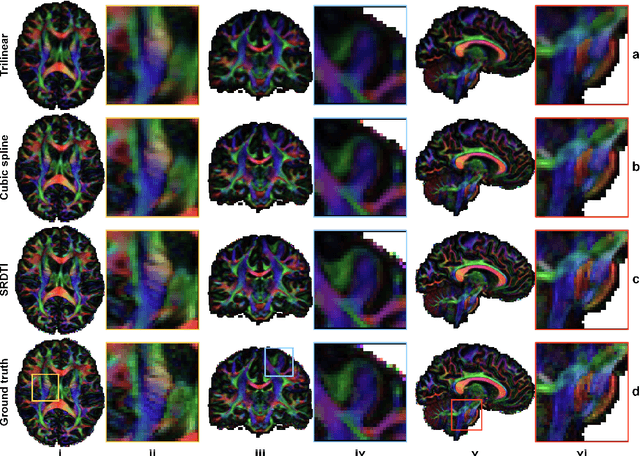
Abstract:High-resolution diffusion tensor imaging (DTI) is beneficial for probing tissue microstructure in fine neuroanatomical structures, but long scan times and limited signal-to-noise ratio pose significant barriers to acquiring DTI at sub-millimeter resolution. To address this challenge, we propose a deep learning-based super-resolution method entitled "SRDTI" to synthesize high-resolution diffusion-weighted images (DWIs) from low-resolution DWIs. SRDTI employs a deep convolutional neural network (CNN), residual learning and multi-contrast imaging, and generates high-quality results with rich textural details and microstructural information, which are more similar to high-resolution ground truth than those from trilinear and cubic spline interpolation.
An Aerial Image Recognition Framework using Discrimination and Redundancy Quality Measure
Oct 06, 2014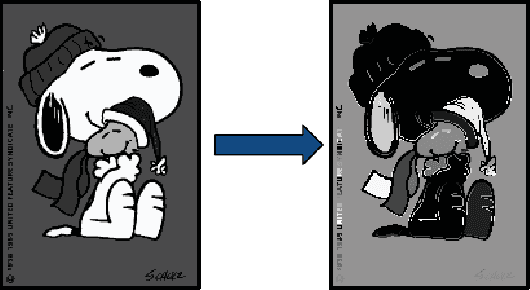
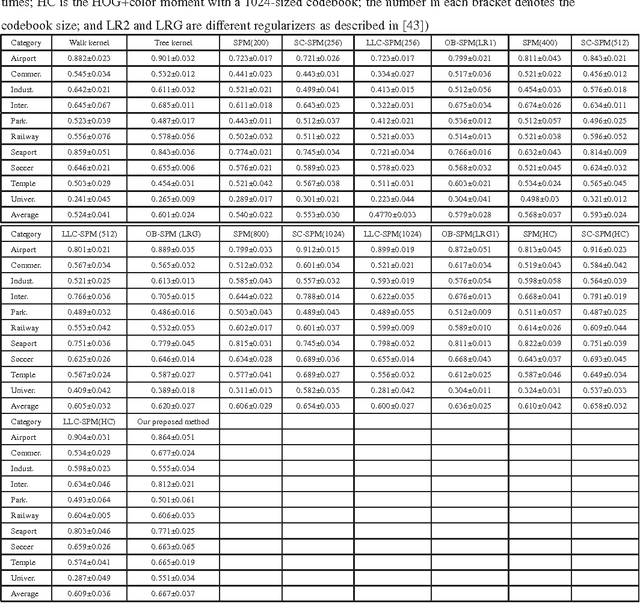

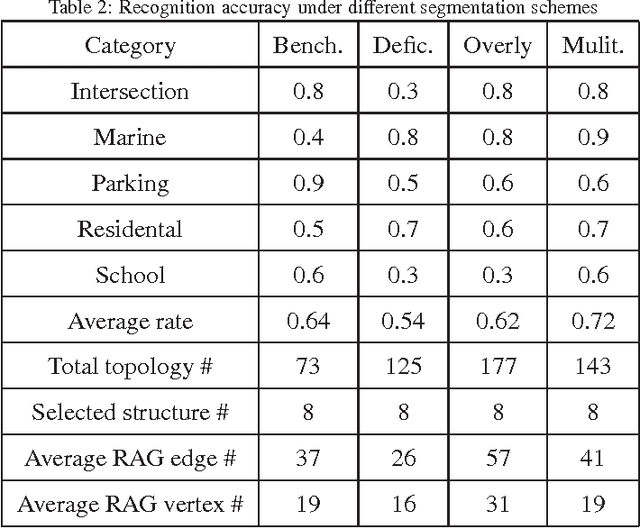
Abstract:Aerial image categorization plays an indispensable role in remote sensing and artificial intelligence. In this paper, we propose a new aerial image categorization framework, focusing on organizing the local patches of each aerial image into multiple discriminative subgraphs. The subgraphs reflect both the geometric property and the color distribution of an aerial image. First, each aerial image is decomposed into a collection of regions in terms of their color intensities. Thereby region connected graph (RCG), which models the connection between the spatial neighboring regions, is constructed to encode the spatial context of an aerial image. Second, a subgraph mining technique is adopted to discover the frequent structures in the RCGs constructed from the training aerial images. Thereafter, a set of refined structures are selected among the frequent ones toward being highly discriminative and low redundant. Lastly, given a new aerial image, its sub-RCGs corresponding to the refined structures are extracted. They are further quantized into a discriminative vector for SVM classification. Thorough experimental results validate the effectiveness of the proposed method. In addition, the visualized mined subgraphs show that the discriminative topologies of each aerial image are discovered.
 Add to Chrome
Add to Chrome Add to Firefox
Add to Firefox Add to Edge
Add to Edge